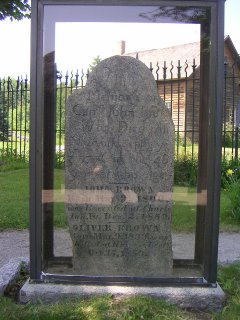 Recently, I have become interested in Spiritualism, a true American folk religion. While you may have never heard of its name, I'm sure everyone has heard of its classic manifestation: a seance conducted by a medium in a dark room where the spirits (hence the name) of the dead cross over and communicate to the living, both through the medium and through rappings, table-liftings, strange noises and apparent psychic phenomenon (like ESP and telekinesis). Spiritualism, over 150 years after its beginnings, is still going strong today, look at the Psychic Friends Network, Ramtha/JZ Knight (check here for the Wikipedia article), the television show Crossing Over (I think that was the name of it, it was featured quite prominently in South Park), countless books and television specials, but also in more grass-roots seances and popular belief in America.
Recently, I have become interested in Spiritualism, a true American folk religion. While you may have never heard of its name, I'm sure everyone has heard of its classic manifestation: a seance conducted by a medium in a dark room where the spirits (hence the name) of the dead cross over and communicate to the living, both through the medium and through rappings, table-liftings, strange noises and apparent psychic phenomenon (like ESP and telekinesis). Spiritualism, over 150 years after its beginnings, is still going strong today, look at the Psychic Friends Network, Ramtha/JZ Knight (check here for the Wikipedia article), the television show Crossing Over (I think that was the name of it, it was featured quite prominently in South Park), countless books and television specials, but also in more grass-roots seances and popular belief in America.What is particularly relevant to this blog though, is the little-known origins of American Spiritualism (there was a small movement in the late 1700's in Sweden, but modern Spiritualism comes from America). The first American mediums where three women called the Fox Sisters. The sisters lived in a supposedly haunted house in Hydesville, NY during the Antelbellum years with their parents where they learned to communicate with the ghost through a rapping code. The sisters quickly became national phenomenons, travelling and communicating with spirits. Soon everyone was getting in on the act and mediums were cropping up all over the place. Interestingly, while early Spiritualism was Christian in many aspects (1), it was in many ways a response to Christianity. Many early (and current, like JZ Knight) mediums were female and it existed as a faith system outside of the organized churches.
This rage in Spiritualism was not the only faith born out of Antelbellum Upstate NY. This area was known as the "Burnt-Over District," and experienced wave after wave of revivals, tent-meetings and spontaneous religious movements. It was home to not only the Fox Sisters but also to Joseph Smith, who founded Mormonism, William Miller and the Millerites, which is today called Seventh Day Aventism, the famous Oneida Community, and Charles Grandison Finney's early Pentacostalism. The area also was a haven for Shakers, the Fouiriest Utopians, the early Suffragettes (Seneca Falls) and Abolitionists like Frederick Douglass and John Brown (2). This was a time of powerful folk religion, some of which lives on among the Mormons in Utah (3) and in relics like the Cardiff Giant, displayed in the Farmer's Museum in Cooperstown.

What an incredible explosion of creativity in faith and social systems. I'm afraid I don't know enough about it to give an authoritative reason behind this time period, but I will venture a guess that it was related to: the frontier experience (Western NY was the frontier at that time) and its lack of organized religion, the fervour of the Second Great Awakening nationwide, the egalitarianism and belief in progress found in the early Republic and inherited religiousity from their Yankee New England roots.
The two photos I've added here are of John Brown's grave outside of Lake Placid in the Adirondacks and my buddy John being all holier-than-thou at the "Sacred Grove" where Mormonism-founded Joseph Smith supposedly saw God and Jesus who told him to found his own religion.
(1) It believed in the afterlife and heaven, a monotheistic God, angels/ghosts and a Christian values system.
(2) Most of this comes from a wonderful Wikipedia article. Also, technically, John Brown's farm is in the Adirondacks, not the Burnt-Over District, but it is Upstate New York.
(3) Like belief in modern prophecy, seeing stones and spiritual guides interacting in contemporary life.
Posted by Jesse

2 comments:
Interesting entry - I came across it while browsing the net for the phrase "Burnt-over district".
I am doing some undergrad research at Kent State University on antebellum religion, specifically in my home county of Lorain County, Ohio. Lorain County has a Charles Finney connection and I might mention that while his revival techniques did seem to be close to Pentecostalism he was not a Pentecostal, as the movement didn't start until about 100 years ago in 1906.
Good post, though, and I think the ideo of American Spirtualism is certainly something overlooked in the study of the Second Great Awakening.
I was also looking for infomation on the District; although I lived in Syracuse for three years in the 60's, I had never heard of it before today.
I remember going to this area back then, and seeing the Cardiff Giant. Although it's in the museum now, it seems to me it was lying in a hole in the ground covered by a tent then.
I really miss upstate New York and would love to return someday.
Post a Comment